Our Blog - Van Gogh - the Immersive Experience
I had seen an ad for the Van Gogh Experience somewhere, and then a couple friends posted about it on Facebook, so we decided it was worth getting tickets for when it arrived here.
I'm sure everyone knows who Van Gogh is, but there were a few things that I didn't realize until I started looking into his life. He died when he was only 37, but in his relatively short life, he was a prolific artist. He created over 2,000 pieces of artwork including 860 oil paintings. Most of them came from the final 2 years of his life ... over 70 from the last 80 days when he lived in Auvers-sur-Oise in France. His paintings include landscapes, still life (lots of them containing flowers), portraits, and self-portraits, and are characterized by bold colors and dramatic brushwork. While he was not commercially successful (I don't think he sold a single painting during his life), he contributed to the foundations of modern art.
They spoke in the exhibition about how, being quite poor, he couldn't afford to pay for models to pose for his paintings. This is one of the reasons why most of his works depicted peasant laborers or people that he ran into on the street.
Another thing that I didn't know is that he had 2 brothers and 3 sisters. I was aware of his brother Theo, but didn't realize that there were other siblings. The exhibition had a panel of information on his 3 sisters but actually didn't mention the second brother, Cor. Supposedly, the sisters weren't interested in his art during his lifetime, but they kept much of his works as possible after his death. But probably the majority of the credit for the world knowing and admiring his works has to go to his sister-in-law (Theo's wife), Jo. She became a fervent promoter of his work and donated most of her collection to the Van Gogh museum in Amsterdam.
There are 3 parts to the exhibition: a set of informative panels talking about various parts of his life, including his sisters, his inspiration from Japanese prints, and details on a few of his most famous paintings. We then headed into a large room where various of his paintings were somewhat "brought to life" in a 360° video. Here are a few photo captures from that part (with notes about what they are). Lastly, we did the virtual reality experience, where we basically "walked" through the areas where his paintings were done, seeing the actual painting added into a frame in the correct place.
We start with Almond Blossom (1890), which then melted into Sunflowers (1887).

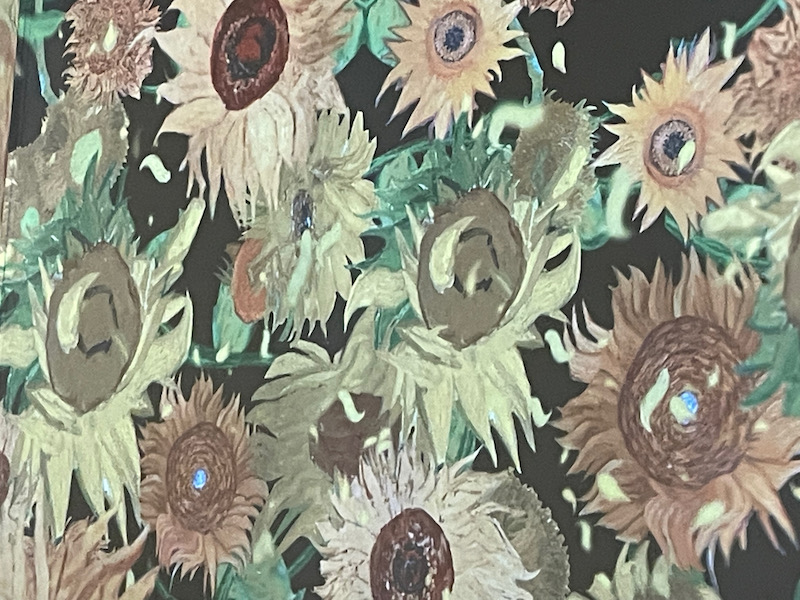
Here I have Starry Night Over the Rhone (1888) and then probably his most famous, The Starry Night (1889). At the start, there was a short video that talked about these two paintings specifically, somewhat showing a change in his mindset. In the earlier work, you have stars in the sky but there are quite a few bright lights, shimmering on the water, that come of "humanity". In the latter work, the town (representing humanity) is quite dark and drab (with only a few bright lights in windows) and the sky is much more vivid and almost electric. The time between 1888 and 1889 was key in his life ... his move to Arles (where he painted the majority of his works) and a visit from Gauguin. That visit really was (in my opinion) the start of the mental breakdown that landed him in mental hospitals and, eventually, ended with his death.
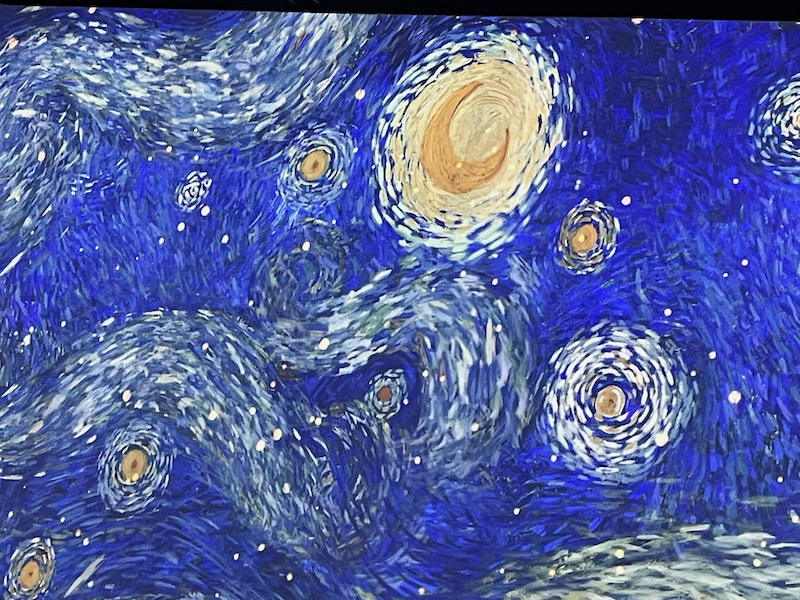

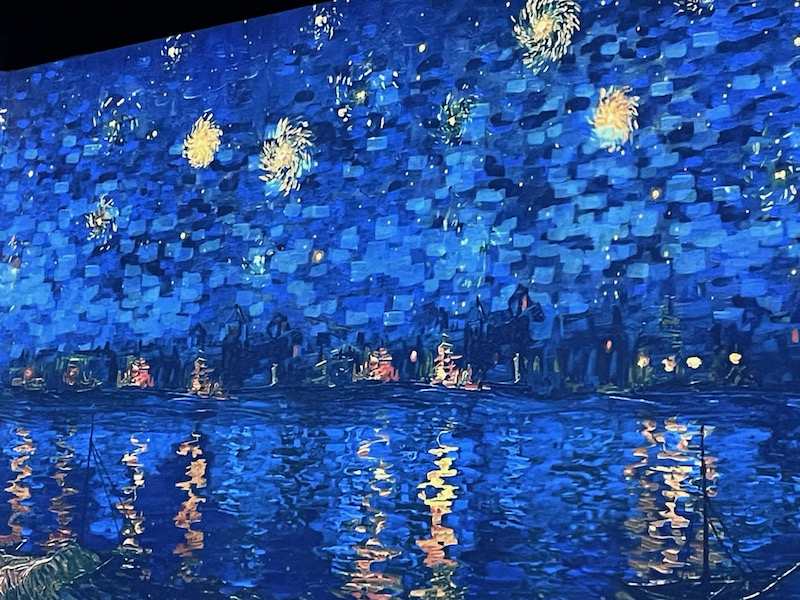

A few other ones .... his Room in Arles (there were multiple versions of this one) with lots of his various paintings that were shown randomly in the frames on the walls. And lastly, his Iris's.
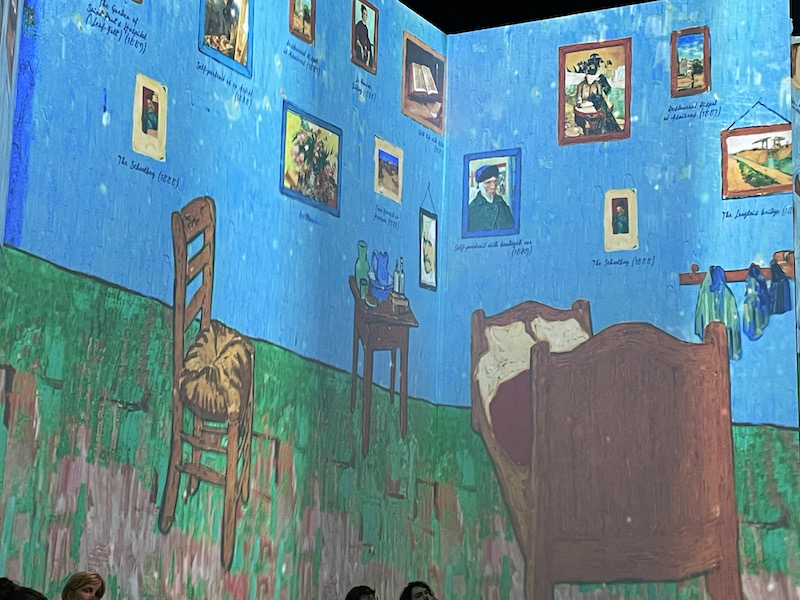
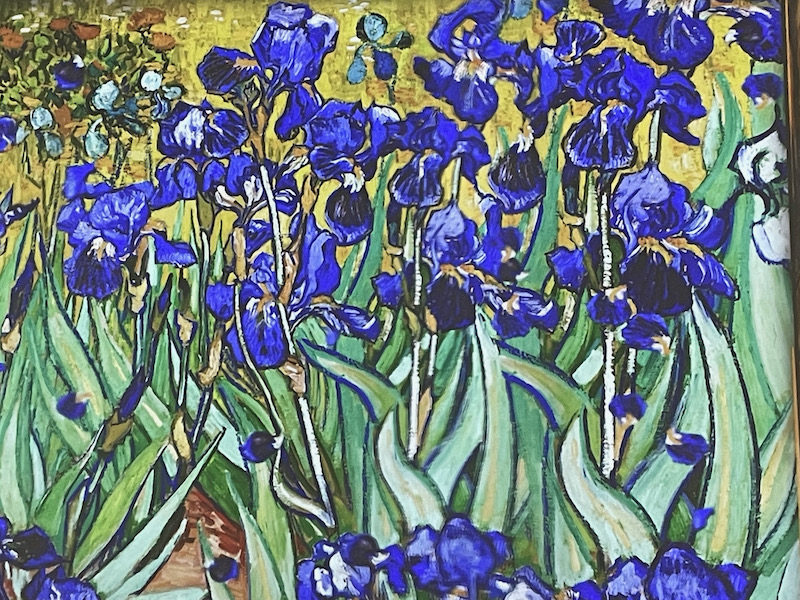
I grabbed a short video as it restarted, so that you could get an idea of how the pictures were brought "to life" and how they melted into each other.
We ended up watching the movie "At Eternity's Gate", a movie about Van Gogh, and I am looking into potentially buying one of the many books that have a subset of the letters that he wrote to his brother Theo, who financially supported him for his entire life.